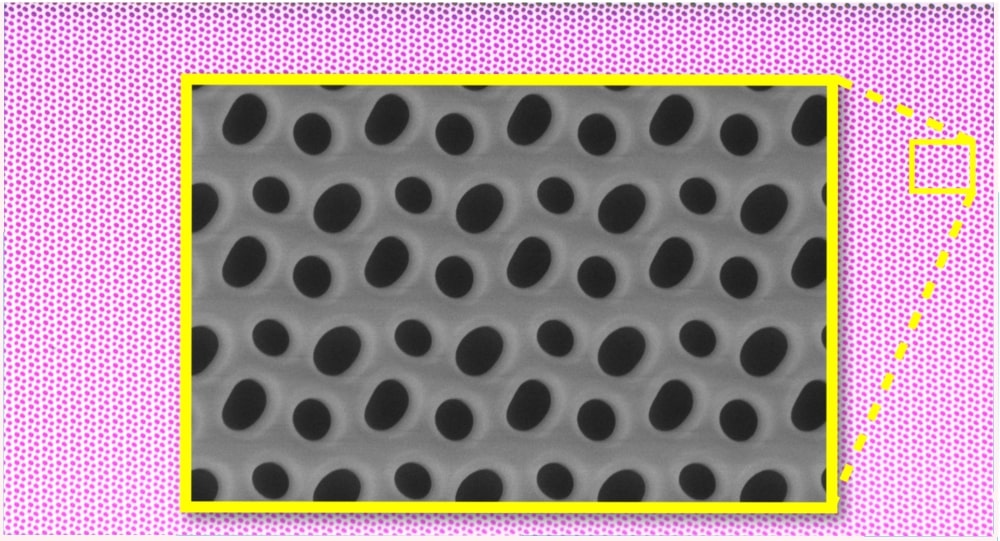Now Reading: Laser Sail for Alpha Centauri Mission Now Slashed to $25 Million
-
01
Laser Sail for Alpha Centauri Mission Now Slashed to $25 Million
Laser Sail for Alpha Centauri Mission Now Slashed to $25 Million

Quick Summary
- Researchers at Delft university of Technology, Netherlands have developed a highly reflective, ultra-thin photonic-crystal material to create lightweight “laser-pushed sails” for space exploration.
- The sails are nanometer-thick with a square-meter-sized area but weigh only about one gram, enabling spacecraft acceleration to one-fifth the speed of light (200x faster than the Voyager probe).
- The team achieved a 9000-fold reduction in manufacturing costs for these sails using optical lithography rather than electron-beam methods. A full-size sail could cost around €25 million.
- Neural topology optimization was used to design oblong-shaped nanoholes arranged in pentagonal lattices. This layout offers improved broadband reflectivity without adding thickness or weight.
- Applications beyond space exploration include movable mirrors and imaging optics due to the material’s lightweight and compliant nature.
- The Starshot Breakthrough Initiative aims to send gram-scale probes to Alpha Centauri within 20 years using this technology.initial funding totaled $100 million as it’s inception by stephen Hawking,Mark Zuckerberg,and Yuri Milner in 2016.
Indian Opinion Analysis
The breakthrough demonstrated by researchers addresses critical engineering challenges in developing laser-driven lightsails-essential components for next-generation interstellar exploration projects like Breakthrough Starshot. By achieving an extraordinary reduction in production costs through optical lithography processes (9000 times lower), this work is a stride toward realizing scalable technologies adaptable across industries.
For India-a rising space power with growing advancements led by organizations like ISRO-this innovation opens opportunities for collaboration on lightweight materials science and photonic applications. While India has recently focused on lunar and planetary missions leveraging cost-effective solutions, such ultra-thin reflective structures could enhance domestic efforts on propulsion systems or satellite deployment efficiency.
Moreover, the progress hints at potential cross-sector benefits such as imaging optics and sensing technologies-the latter holding relevance for fields like precision agriculture or atmospheric research pivotal to India’s sustainability goals. Collaborative research into neural optimization methods may also benefit India’s digital tech expertise housed in AI-rich ecosystems such as Bengaluru.
As global progress accelerates towards interstellar aspirations linked with private-public ventures like Starshot Initiative led by innovators globally (including figures from Silicon Valley), india must observe how breakthroughs may reshape its long-term role among emerging leaders of deep-space exploration strategies.

























